10 Widely Misunderstood Icons From History
When we think of certain historical figures, it’s easy to picture them as almost supernatural beings—larger-than-life characters who shaped the world with a wave of their hand. These individuals have been so deeply mythologized over the years that it sometimes feels like they belonged to another species altogether. But here’s something both interesting and incredibly humanizing: these iconic personalities, the ones etched into textbooks and movies, were just people—flawed, confused, and uncertain at times—just like the rest of us.
Their rise to fame wasn’t fueled by magic or destiny, but by a series of actions that, although extraordinary in hindsight, were grounded in real-world decisions and circumstances. What makes this especially mind-blowing is how different their actual lives were compared to the stories we’ve come to accept as truth. For example, many people imagine that someone like Leonardo da Vinci lived like a glamorous genius all the time—but in reality, he often struggled to finish projects, and some of his most ambitious ideas were never even built.
We tend to forget that even the most influential leaders and creators had to wrestle with self-doubt, deal with failure, and sometimes make mistakes that history quietly swept under the rug. Heroism, in many cases, is just persistence in disguise. There’s something deeply useful in remembering this: realizing that the potential for greatness lies not just in those we read about, but in ourselves as well.
It’s also worth pointing out how myths grow. Over generations, stories are told and retold, each time with a little more flair, a little less nuance. Eventually, the legend overshadows the person. This isn’t just fascinating from a psychological perspective—it’s a reminder of how powerful storytelling can be, and how careful we should be in separating fact from folklore.
If you’re someone who enjoys peeling back the layers of the past, uncovering surprising truths, or challenging popular beliefs, this is exactly the kind of content you’ll want to follow. Figures like Cleopatra, Nikola Tesla, and Winston Churchill all have hidden sides—some inspiring, some shocking—that never make it into the mainstream story. And discovering those sides? That’s where history starts to feel truly alive.
10. Sir Arthur Conan Doyle: The Mind Behind Sherlock Who Believed in Fairies
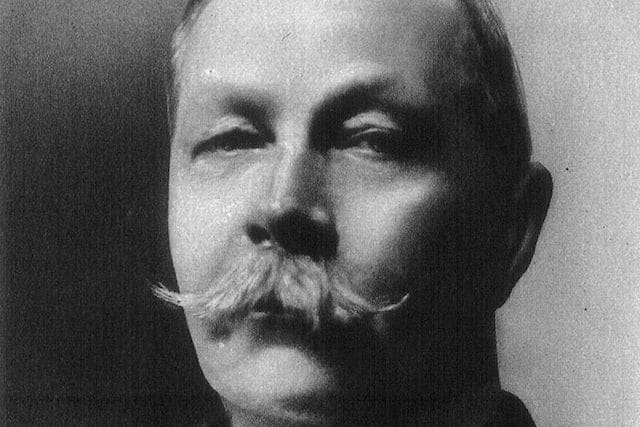
When you hear the name Arthur Conan Doyle, the image of a pipe-smoking, hyper-rational detective probably springs to mind. After all, Doyle gave us Sherlock Holmes, one of the most iconic literary characters ever created. But what if we told you that Doyle himself was almost the complete opposite of the ultra-logical Holmes? That behind the genius who crafted intricate crime-solving puzzles was a man who genuinely believed in fairies?
Conan Doyle’s heart wasn’t truly in detective fiction. In fact, he once grew so tired of Holmes’ popularity that he famously killed him off—only to be forced by public demand to bring him back. What really fascinated Doyle was medicine, history, and the ever-evolving landscape of scientific discovery. He was a trained ophthalmologist, and deeply interested in the medical sciences of his time.
Yet, despite his medical background, Doyle took a surprising—and some would say bizarre—turn later in life. He became a devoted spiritualist, believing in communication with the dead and otherworldly phenomena. Perhaps the most incredible episode was his involvement in the Cottingley fairies, a hoax created by two young girls using paper cutouts and photography. While most dismissed the images as childish trickery, Doyle doubled down. He published an article in The Strand Magazine (yes, the same publication that featured Holmes) presenting the fairy photos as authentic proof of mystical life.
Things got even stranger when he tried to convert the legendary magician Harry Houdini to spiritualism. The two were once friends, but Doyle was convinced that Houdini’s illusions were actual magic—magic that he selfishly refused to acknowledge as real. Their friendship eventually fell apart, with Doyle unable to accept that Houdini’s feats were the result of skill and showmanship, not supernatural forces.
So, while the world remembers Arthur Conan Doyle as the father of logic-loving Holmes, the real man was far more complex—and, in many ways, even more fascinating. His life is a reminder that brilliant minds often come with unexpected beliefs, and that even the creators of the world’s sharpest thinkers are not immune to a touch of the unbelievable.
9. General George Armstrong Custer: A Complex Figure in American History
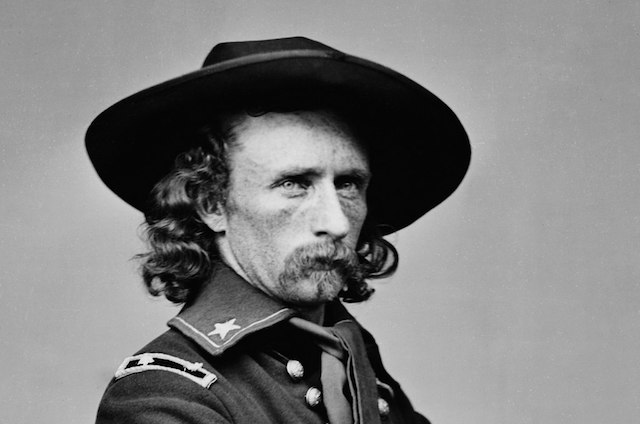
In the fading days of the Native American era, there was a man named George Armstrong Custer who played a significant role. He was an American commander, and his missions were often centered around dealing with Native forces. His task was to either defeat the Native warriors or capture Native populations and send them to places as the government desired.
Custer was widely regarded as a gallant and fearless fighter. People always saw him leading his troops from the very front. After his death, those eulogizing him painted a very rosy picture. They even went as far as to describe his death as a heroic last stand.
However, the truth about him is a bit more complicated than the popular image. His story is indeed controversial. It’s really hard to determine whether he was truly a great guy or not. While it’s true that he liked to lead his men from the front, there was another side to him. He was also known for being quite a show – off. He would don flamboyant outfits, always seeking glory at every opportunity.
Now, let’s talk about that so – called brave last stand. What really happened was this. Custer was on the hunt for a large group of Natives. He assumed that they were mostly civilians. His preoccupation with not allowing them to even get a momentary escape led him to act in a hasty and reckless manner. He rushed in, hoping to catch them off guard. But if only he had taken the time to scout the area carefully, he would have realized that he was severely outnumbered before plunging in.
8. Teddy Roosevelt: The Rough Rider Who Loved Nature… and the Thrill of the Hunt
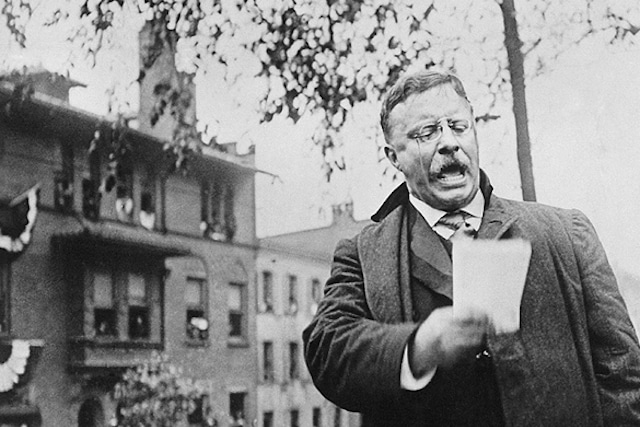
When it comes to American icons, few figures loom as large—or as fascinating—as President Theodore Roosevelt. From charging up San Juan Hill to giving fiery speeches that could stop a bullet (literally), Roosevelt is the kind of historical figure who feels ripped from a novel rather than a textbook. He helped shape modern conservation laws, took on corporate monopolies, and yes, he even inspired the creation of the teddy bear—or so the story goes.
But like many legendary tales, the real story behind the teddy bear is more complicated—and a little less cuddly.
The popular version paints Roosevelt as a soft-hearted hunter who stumbled upon a helpless bear cub, refused to shoot it, and unwittingly created one of the most beloved toys in history. While the part about him refusing to shoot is technically true, the circumstances aren’t quite so heartwarming. During a hunting trip in Mississippi in 1902, Roosevelt’s team hadn’t had much luck tracking bears. Eventually, a guide cornered and tied a young bear to a tree, offering it up as a trophy for the president. Roosevelt declined—not out of affection for the animal, but because it wasn’t a fair hunt. He believed in the “sport” of it all. The bear, unfortunately, was still killed by others in the group.
So, while Teddy Bears did emerge from this strange tale, it wasn’t exactly a story of gentle heroism—it was more about upholding a code of hunting ethics.
And that’s really the key to understanding Roosevelt. His deep commitment to conservation wasn’t rooted in gentle environmentalism, but in his love of the outdoors as a hunter and adventurer. In his view, protecting nature meant preserving it as a place where future generations could continue to experience the wild—rifle in hand, boots on the ground. This philosophy might feel contradictory today, but to Roosevelt, it was entirely logical: to love the wild was to engage with it.
It’s a reminder that history isn’t always as clean-cut as we want it to be. Roosevelt was a man of action, passion, and yes—plenty of contradictions. He helped shape America’s relationship with nature, but on his own rugged terms. And that’s what makes him not just a president, but an unforgettable American legend.
7. Nikola Tesla: A Complex Figure in the Realm of Science

Nikola Tesla is often regarded as the patron saint of science, especially among those who champion misunderstood scientists. His rivalry with Thomas Edison is frequently cited as proof that he was maltreated, and that he never received the financial rewards, proper credit, or the attention he merited. Tesla is often painted as a visionary whose ideas were simply ignored.
However, the reality is somewhat different. Not all of Tesla’s visionary concepts were actually True, some claim that he lacked the necessary funding, yet during his time, he was highly respected and received substantial amounts of money for various projects. For instance, JP Morgan provided him with $150,000, which was a fortune back then, to construct a wireless energy tower. But Tesla was unable to make it function properly.
There might be another aspect to consider. Tesla himself admitted that he slept for four hours a day or even less. This chronic lack of sleep could potentially have led to delusional thinking. It is possible that this was a contributing factor to his believing that he was in love with a specific white pigeon, which some might view as a psychotic episode.
It’s important to remember that Tesla also had many great contributions. His work on alternating current (AC) was revolutionary and had a huge impact on the development of electrical power systems. He also did pioneering work in radio technology. But in the pursuit of his grand ideas, not all of them could be turned into realities.
Despite his setbacks and the debate over his mental state, Tesla’s name remains synonymous with innovation and genius in the field of science. His story serves as a reminder that even the most brilliant minds can have their blind spots and limitations.
6. Abraham Lincoln: The Great Emancipator With a Surprisingly Unpresidential Voice
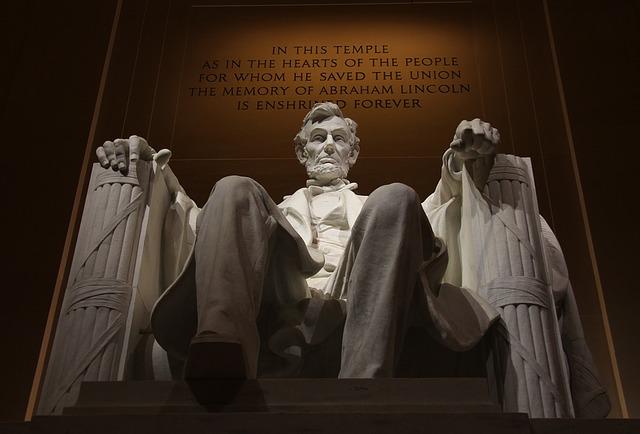
When it comes to historical icons, Abraham Lincoln is a name that stands almost untouchable—etched in granite, literally and figuratively. His towering legacy as the leader who preserved the Union and ended slavery makes him one of the most recognized figures in modern history. You’ve seen the statues, read the speeches, and maybe even imagined his voice echoing through the marble halls of history—deep, authoritative, and commanding, right?
Well, not quite.
Contrary to what most people picture, Lincoln didn’t have a rich, booming baritone. Historical accounts describe his voice as high-pitched, even reedy—a far cry from the deep vocal tones we often associate with powerful speakers. In fact, some referred to it as slightly shrill. Yet, oddly enough, this unique vocal quality may have been a hidden strength. His voice could cut through outdoor noise and carry over large crowds, especially in an era before microphones.
This contrast between our mental image and historical reality adds a fascinating layer to how we perceive charisma and leadership. Lincoln’s speeches, like the Gettysburg Address, weren’t just powerful because of his words—they were delivered by a man whose vocal delivery defied expectations but somehow worked.
Actor Daniel Day-Lewis, in the acclaimed film Lincoln, took this detail seriously. He deliberately avoided the classic “presidential” deep voice trope, choosing instead to emulate descriptions from those who heard Lincoln speak in person. The result? A portrayal that may be far closer to reality than we’d like to believe.
Next time you imagine Lincoln delivering one of his iconic addresses, picture a tall, lean man with a surprisingly thin voice, using every ounce of skill and passion to command the attention of a restless crowd. It’s a reminder that greatness doesn’t always sound—or look—the way we expect it to. Sometimes, history’s most powerful voices come from the most unexpected tones.
5. The Surprising Truth Behind Johnny Appleseed: Booze, Business, and American Folklore
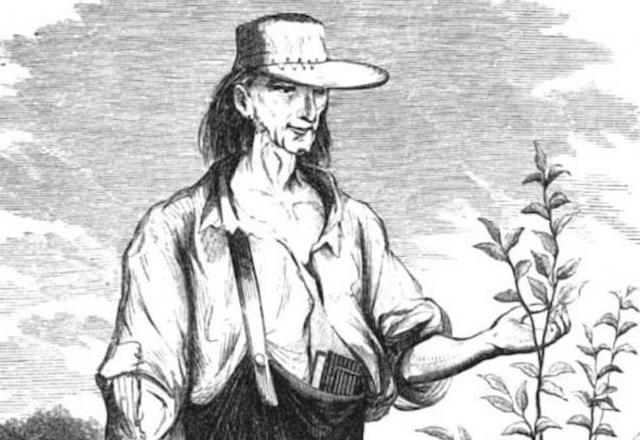
When you hear the name Johnny Appleseed, a certain image probably pops into your head: a barefoot wanderer with a pot on his head, gently scattering apple seeds across the American wilderness, asking for nothing in return but a warm meal and a smile. A true folk hero, right? A symbol of kindness, simplicity, and perhaps a deep love for apple pie?
Well… not exactly.
Johnny Appleseed was real—his actual name was John Chapman—but the version that made it into schoolbooks and bedtime stories is more fairy tale than fact. Yes, he did travel extensively planting apple seeds, and yes, he had a deep connection with the natural world. But his motivations? They were a little more fermented than most people realize.
Chapman wasn’t planting apples to feed hungry settlers or make America pie again. He was spreading seeds that grew bitter, inedible apples, perfect for one very specific purpose: making hard cider. Back in the early days of the American frontier, cider was safer to drink than water, and more popular than beer. The apples Johnny planted weren’t for lunch—they were for liquid courage.
Even more surprising? Johnny wasn’t just a wandering dreamer. He was a shrewd entrepreneur. Under early land laws, planting fruit trees could be used to claim and legally hold land. Chapman would sow apple nurseries on unused plots, then return years later to profit from his foresight. He knew the value of what he was planting—not just for drink, but for ownership.
4. Ponce De Leon: A Re – evaluation of a Historical Figure

Ponce De Leon is often depicted as one of the most ludicrous explorers in history, a man whose exploits are frequently held up as examples of foolishness. During the era when Europeans were first making their way across the vast unknown and laying claim to what they dubbed the New World, Ponce De Leon was a well – known explorer. His contributions to mapping what is now Florida cannot be overlooked. (And if we’re going for a bit of modern – day humor, calling him the first “Florida Man” is an amusing thought experiment.) He is also widely associated with the quest for the so – called Fountain of Youth, a mythical spring that was said to have the power to keep people eternally young. Of course, since such a fountain never existed, his search for it is often seen as a futile and idiotic endeavor. He is commonly thought to have been duped by Native Americans. A real bumbling fool, right?
However, the truth tells a different story. There is not a single shred of evidence to suggest that Ponce was actually on a mission to find this mythical Fountain of Youth that was supposed to grant everlasting youth. So why does almost everyone believe that he was? The answer lies in the machinations of a biographer. After his death, this biographer, who had not been particularly enamored of Ponce during his lifetime, began to spread the story that his goal in exploring the New World was to find this elusive fountain. In essence, we’ve been believing this fallacy because a man, with perhaps his own motives or biases, successfully tarnished another man’s reputation passing.
3. The Uncomfortable Truth About Robert E. Lee That History Glosses Over
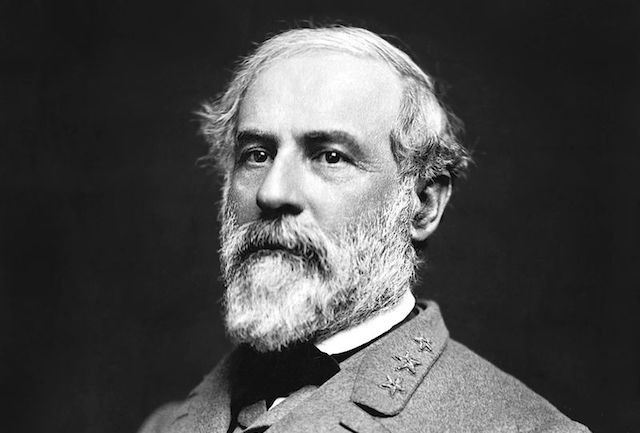
When people talk about General Robert E. Lee, the tone is often reverent—like he was some sort of Shakespearean character caught in a national tragedy, noble but doomed. He’s been romanticized in American culture, especially in the South, where the name “Lee” still gets passed down through generations like a badge of honor. But is the legend really in line with the man?
Not quite.
It’s true that Lee struggled with loyalty—his choice to fight for Virginia over the Union is often painted as a painful, principled decision. But what tends to get left out of the conversation is what he was like off the battlefield—especially in how he treated enslaved people.
After his stepfather died, Lee inherited land and slaves, with a legal clause stating the enslaved individuals should be freed within six years. Instead of honoring that, Lee fought the will in court—and won. Why? So he could keep them enslaved for longer. And that’s just the start. Lee didn’t merely maintain the institution of slavery; he was actively cruel. He ordered brutal punishments, including whippings and physical torture, especially for those who resisted or attempted to escape.
This isn’t just uncomfortable history—it’s often deliberately overlooked. While Lee is still portrayed in many textbooks and pop culture references as a symbol of Southern dignity, the reality is more disturbing. His choices, both legal and personal, reveal a man who upheld and enforced a system of oppression with harsh efficiency.
Why does his legacy still carry an air of reluctant admiration? It’s a question worth asking—especially when understanding how myth and memory shape public figures long after they’re gone. If you’re curious to explore how historical narratives evolve (or are polished over time), sites like Facing History offer in-depth looks at this exact issue.
2. The Surprising Truth Behind Joseph Pulitzer’s Legacy

If you’ve ever heard of the Pulitzer Prize, your mind probably jumps to serious journalism, groundbreaking storytelling, and writers at the top of their game. After all, this award is basically the gold standard for excellence in publishing. So, it’s natural to assume that Joseph Pulitzer must have been a paragon of truth and journalistic integrity. But here’s the twist: the man behind the prize had a far more complicated—and controversial—past.
While the Pulitzer Prize has become a symbol of journalistic honor, it wasn’t awarded because the world thought Pulitzer was some untouchable hero. In fact, he created the award himself, through a clause in his will. It was a strategic move to reshape how he’d be remembered—a kind of historical cleanup job, funded by his fortune.
And he had good reason to think about damage control.
During his lifetime, Pulitzer’s New York World and William Randolph Hearst’s New York Journal were locked in a fierce, almost comical battle for readership. The two papers were notorious for yellow journalism—a sensationalist style of reporting that leaned more toward fiction than fact. Headlines were exaggerated, details distorted, and truth often lost entirely, all in the name of selling more papers.
Their rivalry reached such a fever pitch that some historians argue their coverage helped fan the flames of the Spanish-American War. Pulitzer and Hearst didn’t just report the news—they arguably manipulated it, fueling public outrage with dubious claims and dramatic storytelling. You can read more about that media war here.
1. The Unfiltered Legacy of Martin Luther King Jr.
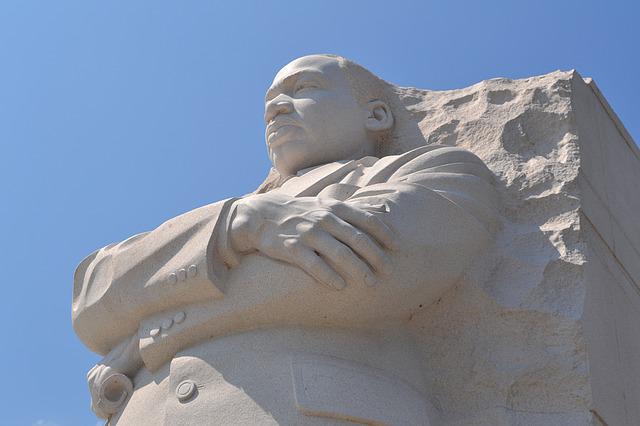
Dr. Martin Luther King Jr. is rightly remembered as one of the most iconic figures in American history. His words—powerful, poetic, and unyielding—still echo across generations. From civil rights marches to modern protest movements, his legacy remains a guiding force. But over time, that legacy has been polished, simplified, and sometimes even misused.
Many people cite Dr. King as the ultimate example of peaceful protest, often contrasting his approach with other civil rights leaders, especially during heated debates around movements like Black Lives Matter. Quotes from his “I Have a Dream” speech are regularly shared, sometimes by those trying to dictate how oppressed groups “should” protest. But here’s the twist: MLK’s story is more complex than those few lines suggest.
While King championed nonviolence, it wasn’t because he believed people should passively accept injustice. It was a tactical and moral stance—a deliberate strategy in a deeply violent and segregated America. He once said, “It is no longer a choice between violence and nonviolence; it is either nonviolence or nonexistence.” That’s not a slogan of weakness—it’s a calculated truth born out of the realities of his time.
What many forget is that Dr. King was not universally beloved in his lifetime. In fact, at the time of his death, he was deeply unpopular with much of white America. His stance on issues like the Vietnam War, economic inequality, and police brutality put him at odds with mainstream comfort zones. And despite public attempts to pit him against Malcolm X, the two leaders weren’t bitter rivals. In fact, many historians believe they were more aligned in purpose than most people think—two men, two methods, one cause.
In one of his final speeches, King told Black youth: “Never let anyone take your manhood.” It was a rallying cry, not just for dignity but for defiant self-worth. Like his friend John Lewis, MLK believed in “good trouble”—disruption that shakes the system and demands attention.
























